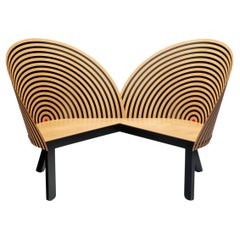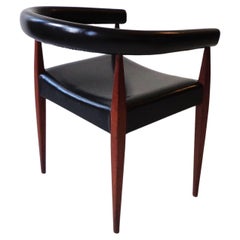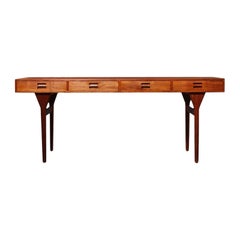Nanna Ditzel Bench For Two
Vintage 1980s Danish Scandinavian Modern Benches
Plywood, Wood
Vintage 1950s Danish Scandinavian Modern Armchairs
Faux Leather, Teak
Recent Sales
1990s Danish Scandinavian Modern Benches
Wood
Vintage 1950s Danish Scandinavian Modern Desks
Teak
Vintage 1950s Danish Scandinavian Modern Lounge Chairs
Wool, Oak
Mid-20th Century Danish Scandinavian Modern Desks
Teak
Vintage 1950s Italian Mid-Century Modern Lounge Chairs
Cane
People Also Browsed
Vintage 1960s German Mid-Century Modern Architectural Elements
Metal, Aluminum
Mid-20th Century American Art Deco Armchairs
Textile, Plywood
Vintage 1980s Italian International Style Chandeliers and Pendants
Chrome
Mid-20th Century Belgian Brutalist Night Stands
Pine
Antique 19th Century Austrian Vienna Secession Beds and Bed Frames
Bentwood
21st Century and Contemporary American Art Nouveau Doors and Gates
Vintage 1920s Belgian Art Deco Armchairs
Mohair, Velvet, Maple
2010s Italian Modern Chandeliers and Pendants
Alabaster, Brass
2010s Italian Modern Chandeliers and Pendants
Brass
Vintage 1930s Italian Art Deco Armchairs
Wood
2010s French Stools
Oak
2010s Indian Organic Modern Animal Sculptures
Nickel
Vintage 1970s Italian Mid-Century Modern Commodes and Chests of Drawers
Brass
Vintage 1970s Italian Mid-Century Modern Bedroom Sets
Steel, Chrome
Vintage 1950s Table Lamps
Metal
Vintage 1930s French Art Deco Shelves
Oak
Nanna Ditzel for sale on 1stDibs
Nanna Ditzel was the most versatile and creative female designer that Denmark produced in the 20th century. Ditzel brought her talents to bear on a staggering array of forms — she designed furniture, jewelry, tableware and textiles; and she shaped her pieces using an equally astonishing variety of materials, from wood and wicker to silver, ceramics and fiberglass.
Born in Copenhagen, she trained as a cabinetmaker at the Royal Academy's furniture school — overseen by the great craftsman of the day, Kaare Klint — and graduated in 1943. Ditzel’s early work adhered to the classic Danish modernist tenets of simplicity, comfort and quality, and her armchairs, with their softly curved backrests are much in the spirit of Hans Wegner. Ditzel’s signature piece of that time is her Ring chair. Designed along with her husband, Jørgen Ditzel, a fabric maker, the chair has a semicircular padded armrest that seems to embrace the sitter. Ditzel began designing in wicker and in 1959 produced the Hanging chair. The piece, suspended from the ceiling by a chain, became a favorite for fashion shoots and may be as iconic of the 1960s as Eero Aarnio’s plastic Ball chair of 1963.
In 1956, Ditzel began designing for the Danish silverware firm Georg Jensen. In an association that lasted some 40 years, Ditzel would create organically shaped jewelry, barware, ceramic tableware and even tablecloths. Like her fellow Dane Verner Panton, Ditzel was not afraid to embrace industrial materials, and she began designing fiberglass chairs in the mid-1960s. Some of her most flamboyant work came toward the end of her career, in pieces such as 1989’s Bench for Two, with its shocking Op-art finish, or the Trinidad chair of 1992, with it’s sunburst-like, cut-though backs. Such feats of creativity were a fitting coda to one of the most imaginative, prolific and remarkable women of modern design.
A Close Look at Scandinavian Modern Furniture
Scandinavian modernism is perhaps the warmest and most organic iteration of modernist design. The work of the designers associated with vintage Scandinavian modern furniture was founded on centuries-old beliefs in both quality craftsmanship and the ideal that beauty should enhance even the humblest accessories of daily life.
ORIGINS OF SCANDINAVIAN MODERN FURNITURE DESIGN
- Emerged in the 1930s
- Scandinavian design and Nordic design originated primarily in Denmark, Sweden, Finland, Iceland and Norway
- Introduced in the United States in mid-20th century
- Informed by the Bauhaus; influenced American mid-century modernism
CHARACTERISTICS OF SCANDINAVIAN MODERN FURNITURE DESIGN
- Bold, clean lines and simple, sturdy symmetries
- Use of natural materials — native woods such as pine, ash and beech
- Open, airy spaces
- Promotion of functionality
- Emphasis on craftsmanship; rooted in cabinetry profession and traditional construction techniques
- Minimal ornamentation (little to no embellishment)
- A neutral or light color palette owing to prominence of light woods
SCANDINAVIAN MODERN FURNITURE DESIGNERS TO KNOW
- Alvar Aalto
- Hans Wegner
- Kaare Klint
- Arne Jacobsen
- Greta Magnusson Grossman
- Finn Juhl
- Arne Vodder
- Verner Panton
ICONIC SCANDINAVIAN MODERN FURNITURE DESIGNS
VINTAGE SCANDINAVIAN MODERN FURNITURE ON 1STDIBS
The gentle, organic contours that are typical of Scandinavian design appear in the furnishings and decor created by Danish, Finnish and Swedish designers not as a stylistic gesture, but rather as a practical, ergonomic — and, as importantly, elegant — response to the human form.
Each nation produced exceptional talents in all areas of the applied arts, yet each had its forté. Sweden was home to Greta Magnusson Grossman and Bruno Mathsson — creators of the classic Grasshopper lighting series and Berlin daybed, respectively — but the country excelled most notably at ceramics. In the 1920s at the great Gustavsberg porcelain manufactory, Wilhelm Kåge introduced pieces in the Scandinavian style based on influences from folklore to Cubism; his skills were passed on to his versatile and inspired pupils Berndt Friberg and Stig Lindberg.
Likewise, Finland produced a truly ingenious Scandinavian modern furniture designer in the architect Alvar Aalto, a master at melding function and artistic form in works like the Paimio chair, created in collaboration with his first wife, Aino. Yet Finnish glassware was pre-eminent, crafted in expressive, sculptural designs by Tapio Wirkkala and Timo Sarpaneva.
The Danes excelled at chairs. Hans Wegner and Arne Jacobsen were exemplars of the country’s facility with wood, particularly teak.
Wegner created such iconic pieces as the Round chair and the Wishbone chair; Jacobsen — while the revolutionary architect and furniture innovator produced the best-selling plywood Ant chair — designed two classic upholstered pieces of the 1950s: the Swan chair and Egg chair. The list of great Danes could go on and on, including Finn Juhl, a stylistic maverick and maker of the bold Chieftain chair; Poul Kjaerholm, with his lean metal-and-rattan aesthetic; and Verner Panton, who introduced a vibrant Pop note into international design.
Today, decades after their heyday, the prolific, ever-evolving Scandinavian modernists continue to amaze and delight, and interior designers all over the world use their pieces to bring warmth to any given space.
On 1stDibs, you will note both instantly recognizable vintage Scandinavian modern chairs, sofas, rugs and tables — those that have earned iconic status over time — and many new discoveries.



